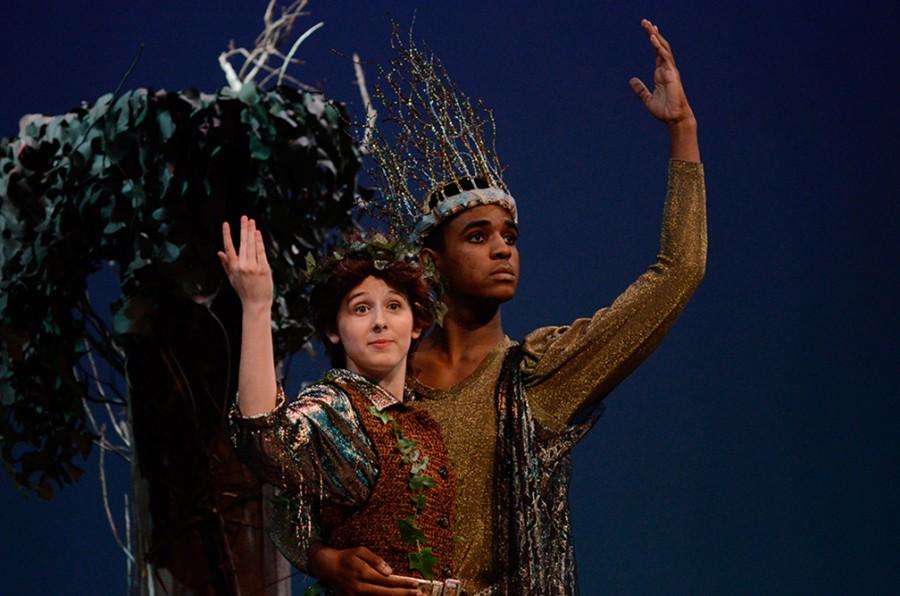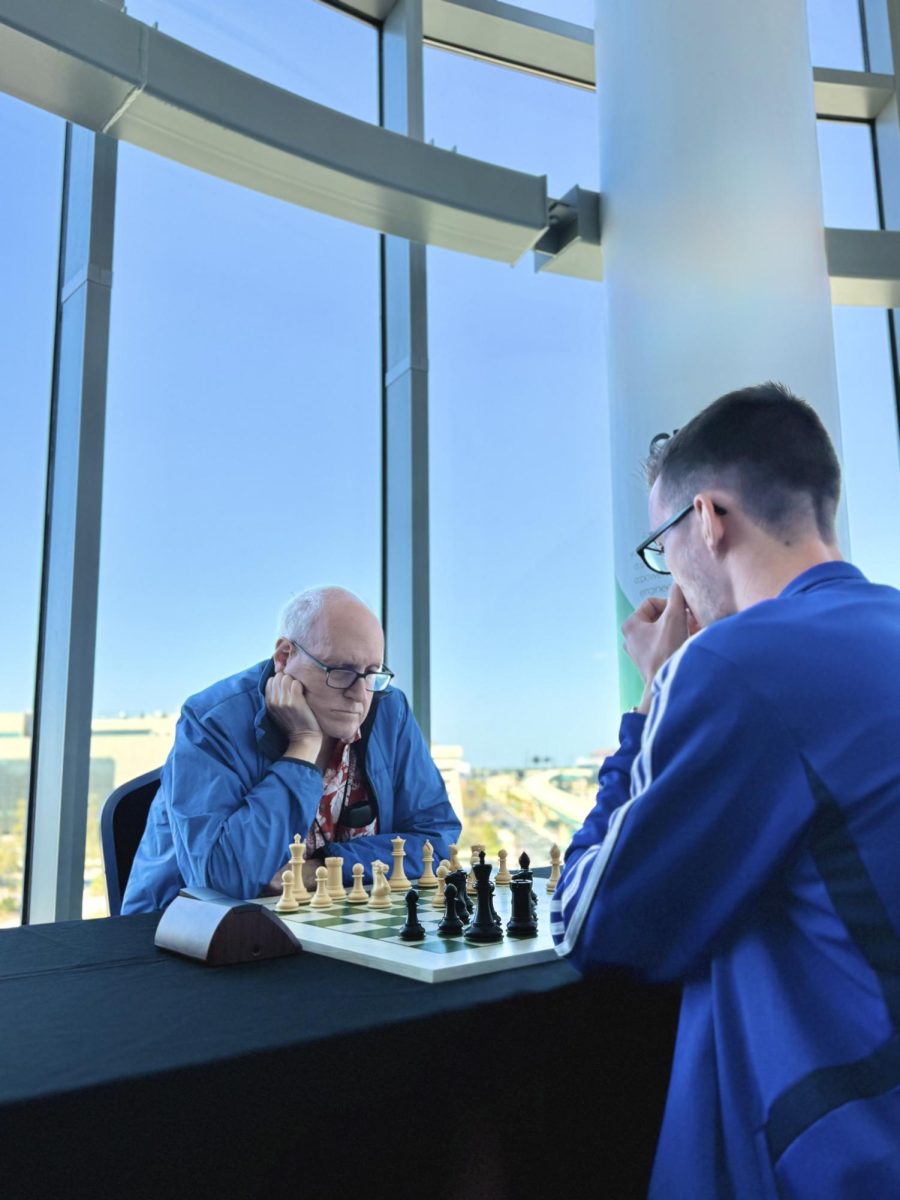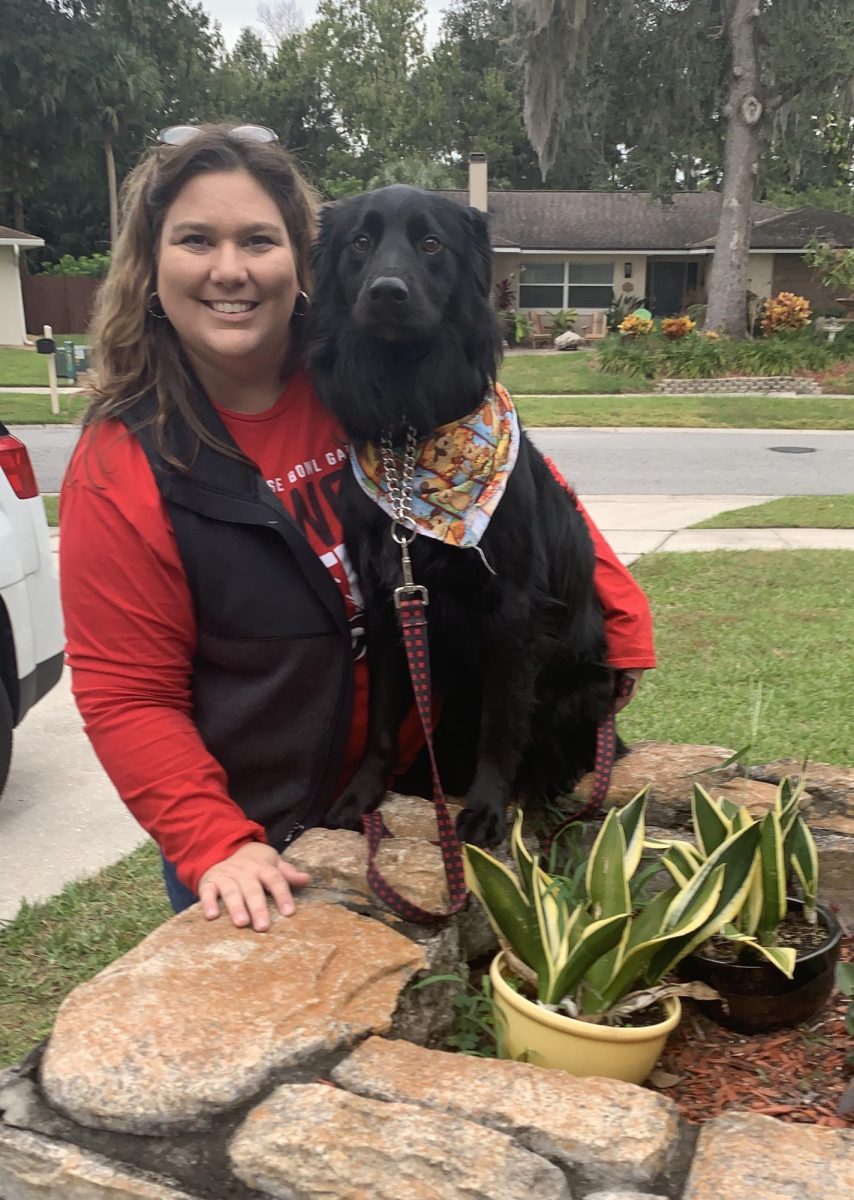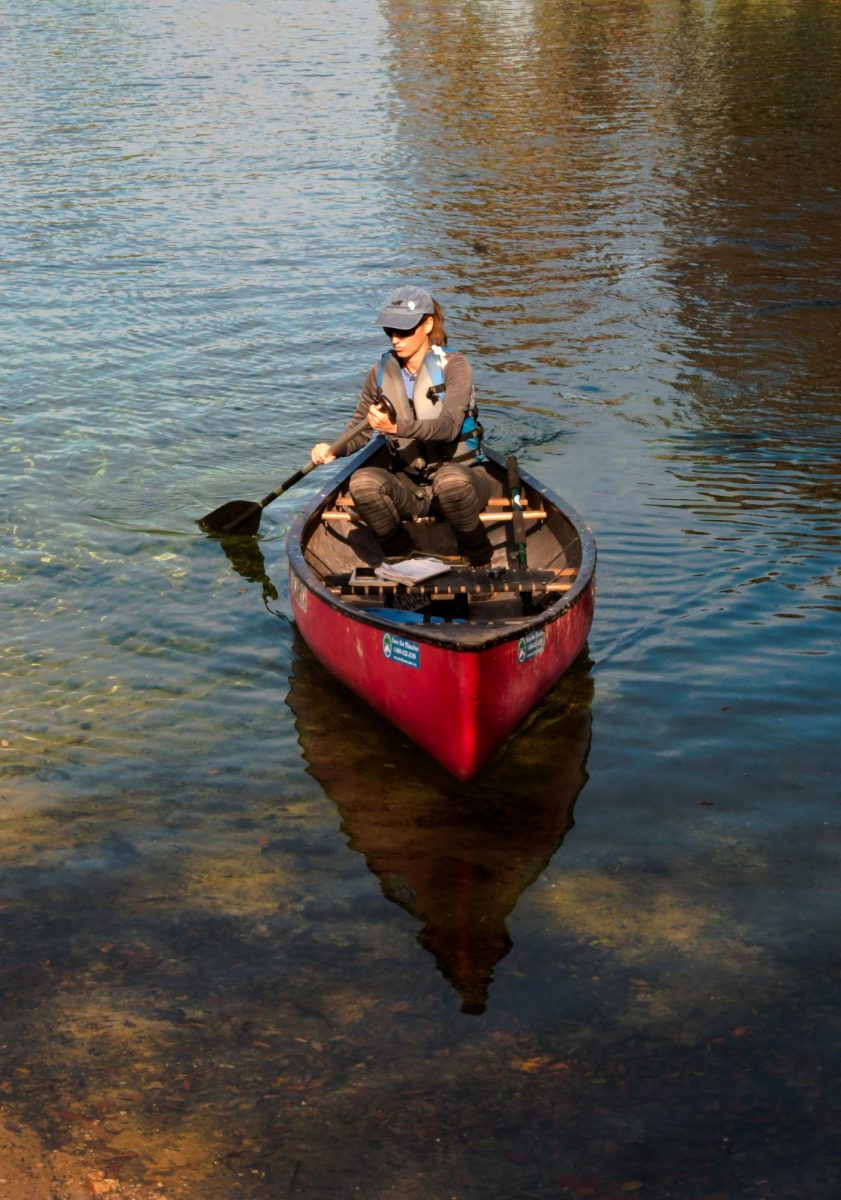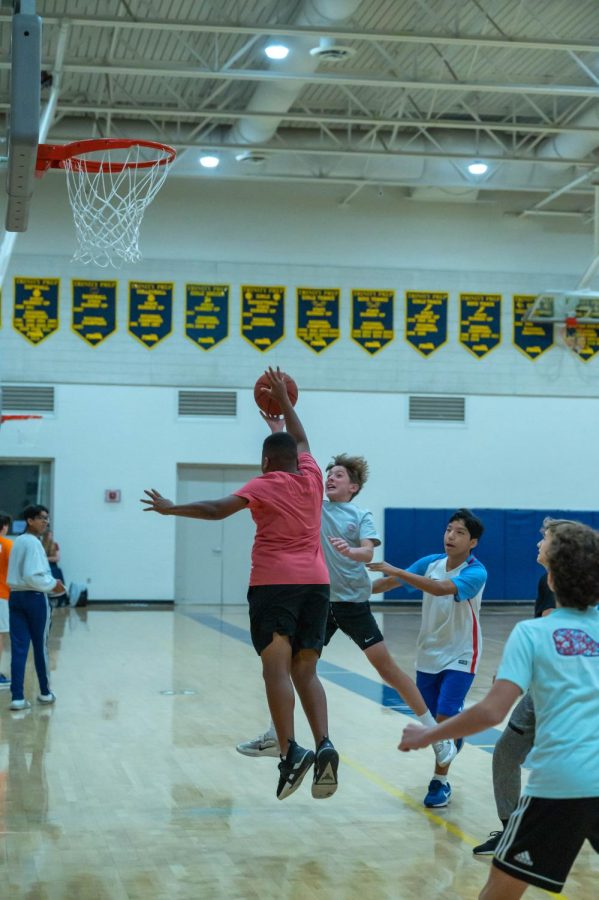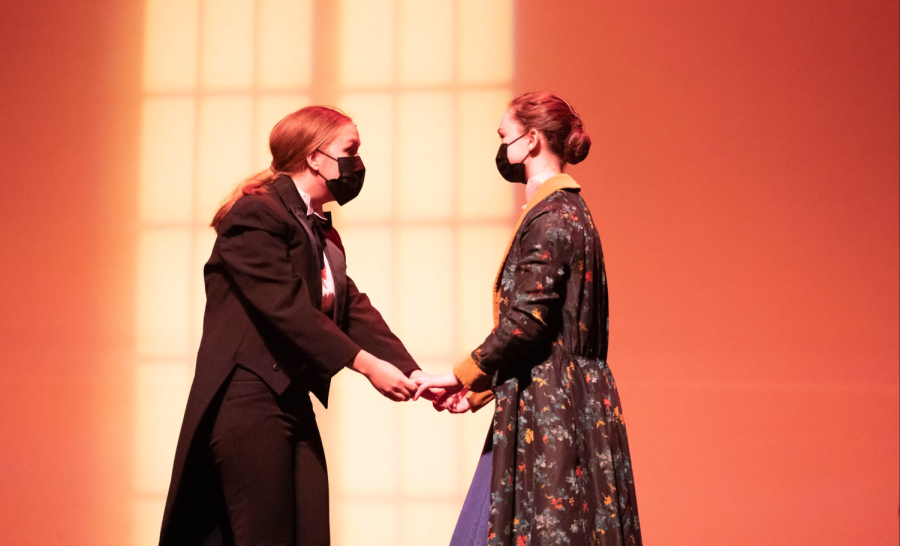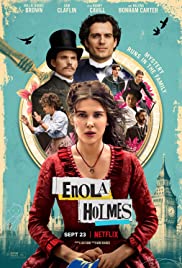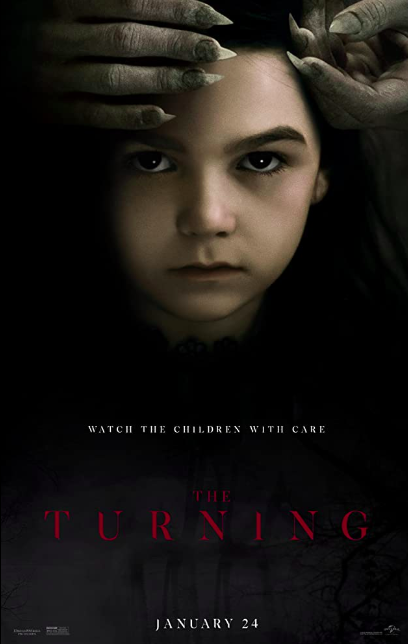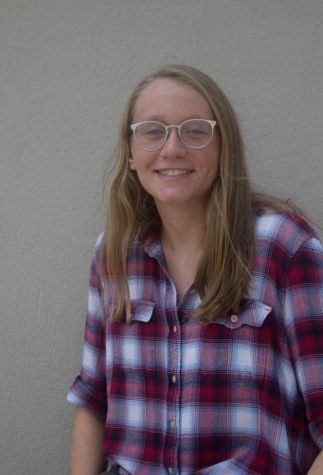The antics of characters ranging from fairies trapped in the wrong millennium to a blustering studio owner to his tramp girlfriend who desperately wants to star in a respectable movie entertained audiences in the first upper school production of the year. The show, Ken Ludwig’s Shakespeare in Hollywood, ran from Wednesday, November 4 to Sunday, November 8.
The play took place in 1943 on the Hollywood set of Max Reinhardt’s movie of the Shakespeare play A Midsummer Night’s Dream. In the first act, Reinhart (played by Tony Moreno ’17) is having trouble convincing blustering studio owner Jack Warner (Austin Buholtz ’17) to make a movie of the Shakespeare play. However, Warner is blackmailed into producing the movie by his girlfriend Lydia Lansing (Lydia Gifford ’17 and Robin Sharp ’17), who is desperate to star in a respectable movie as a way to counteract her reputation as a tramp. To complicate things further, the actors who are supposed to play Oberon and Puck in the movie are hurt prior to the start of filming, and two mysterious actors materialize to take their places. Unbeknownst to the movie’s producers, these new actors are actually the fairies Oberon (Tyler Covington ’17) and Puck (Rachel Pisarski ’17 and Carly Swain ’19), and they begin to cause mischief as soon as they arrive on set.
By the time the second act begins, Oberon has fallen in love with the actress playing Hermia, Olivia Darnell (Cameron Miller ’16), who is also fancied by heartthrob Dick Powell (Nicholas Reifler ’16). In an attempt to rid himself of his rival, Oberon commissions Puck to use the infamous flower from A Midsummer Night’s Dream to make Powell fall in love with someone else. Of course, this plan backfires and creates crazy love triangles out of the entire cast, leading to raucously funny results.
Many of the characters and content of the play are true to history. In the 1930s, four major motion pictures of Shakespeare movies were produced, one of which was Reinhardt’s Shakespeare in Hollywood. Dick Powell, the actor who played Lysander in the play, was a famous Hollywood heartthrob of the time and portrayed Lysander in the actual movie. Janine Papin, the play’s director, thought that the added historical value of the play provided extra learning opportunities for the show’s cast and audience.
“The fact that there was so much history involved in the play since it was based in Hollywood in the 1930s provided an opportunity for us to learn so much about that time period and the people associated with the play,” Papin said. “I love shows that provide educational material in addition to entertainment!”
Much of the play’s comedic success stemmed from its excellent acting. From fairies trapped in the wrong millennium to a blustering studio owner to his tramp girlfriend who desperately wants to star in a respectable movie, Shakespeare in Hollywood featured a unique and unforgettable cast of characters. Portraying these characters was definitely a challenge, but the cast was up to the job. Many of the actors went above-and-beyond in preparing for the show, such as learning accents and mannerisms particular to their character.
“Everybody could find new ways to portray their characters, which made it so fun on the stage,” said Robin Sharp, who played Lydia Lansing. She also said that her favorite part of being in the show was learning the Brooklynese dialect for her character.
Much of the acting’s success also came from the actors’ creativity and fearlessness putting themselves out there on stage.
“The talent of the students involved and creative choices that we made during the rehearsal process were one of the production’s strengths,” Papin said.
The cast enjoyed the rehearsal process as well as performing in the final productions.
“It’s so much fun just to play and be in the moment of what’s going on. Plus, when the audience gives you great feedback, you just want to give it right back because you know they appreciate you,” Sharp said.
Overall, the show came together very well into a humorous, original and enjoyable production.
“My favorite part of any show is sitting back and enjoying the performances, knowing that the students have grown from the rehearsal process, developed more self confidence, pushed their boundaries artistically and are now having fun performing,” Papin said. “It is like being a proud parent.”




